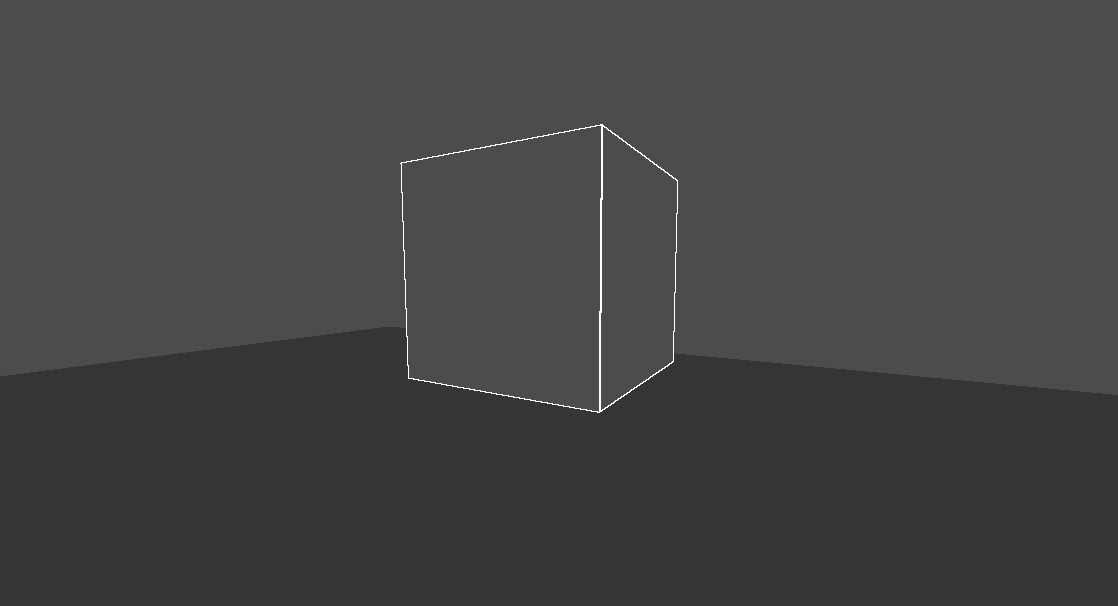3D Pixel art outline & highlight Shader (Post-processing/object)
Demo: https://github.com/leopeltola/Godot-3d-pixelart-demo
A shader that adds outlines and highlights to low-res 3D pixel art. Made for Godot 4.
This shader works as both a post-processing and standard material shader.
Shader code
shader_type spatial;
render_mode unshaded;
// MIT License. Made by Leo Peltola
// Inspired by https://threejs.org/examples/webgl_postprocessing_pixel.html
uniform sampler2D DEPTH_TEXTURE : hint_depth_texture, filter_linear_mipmap;
uniform sampler2D SCREEN_TEXTURE : hint_screen_texture, filter_linear_mipmap;
uniform sampler2D NORMAL_TEXTURE : hint_normal_roughness_texture, filter_nearest;
uniform bool shadows_enabled = true;
uniform bool highlights_enabled = true;
uniform float shadow_strength : hint_range(0.0, 1.0, 0.01) = 0.4;
uniform float highlight_strength : hint_range(0.0, 1.0, 0.01) = 0.1;
uniform vec3 highlight_color : source_color = vec3(1.);
uniform vec3 shadow_color : source_color = vec3(0.0);
varying mat4 model_view_matrix;
float getDepth(vec2 screen_uv, sampler2D depth_texture, mat4 inv_projection_matrix){
// Credit: https://godotshaders.com/shader/depth-modulated-pixel-outline-in-screen-space/
float raw_depth = texture(depth_texture, screen_uv)[0];
vec3 normalized_device_coordinates = vec3(screen_uv * 2.0 - 1.0, raw_depth);
vec4 view_space = inv_projection_matrix * vec4(normalized_device_coordinates, 1.0);
view_space.xyz /= view_space.w;
return -view_space.z;
}
vec3 getPos(float depth, mat4 mvm, mat4 ipm, vec2 suv, mat4 wm, mat4 icm){
vec4 pos = inverse(mvm) * ipm * vec4((suv * 2.0 - 1.0), depth * 2.0 - 1.0, 1.0);
pos.xyz /= (pos.w+0.0001*(1.-abs(sign(pos.w))));
return (pos*icm).xyz+wm[3].xyz;
}
float normalIndicator(vec3 normalEdgeBias, vec3 baseNormal, vec3 newNormal, float depth_diff){
// Credit: https://threejs.org/examples/webgl_postprocessing_pixel.html
float normalDiff = dot(baseNormal - newNormal, normalEdgeBias);
float normalIndicator = clamp(smoothstep(-.01, .01, normalDiff), 0.0, 1.0);
float depthIndicator = clamp(sign(depth_diff * .25 + .0025), 0.0, 1.0);
return (1.0 - dot(baseNormal, newNormal)) * depthIndicator * normalIndicator;
}
void vertex(){
model_view_matrix = VIEW_MATRIX * mat4(INV_VIEW_MATRIX[0], INV_VIEW_MATRIX[1], INV_VIEW_MATRIX[2], MODEL_MATRIX[3]);
}
void fragment() {
vec2 e = vec2(1./VIEWPORT_SIZE.xy);
// Shadows
float depth_diff = 0.0;
float neg_depth_diff = .5;
if (shadows_enabled) {
float depth = getDepth(SCREEN_UV, DEPTH_TEXTURE, INV_PROJECTION_MATRIX);
float du = getDepth(SCREEN_UV+vec2(0., -1.)*e, DEPTH_TEXTURE, INV_PROJECTION_MATRIX);
float dr = getDepth(SCREEN_UV+vec2(1., 0.)*e, DEPTH_TEXTURE, INV_PROJECTION_MATRIX);
float dd = getDepth(SCREEN_UV+vec2(0., 1.)*e, DEPTH_TEXTURE, INV_PROJECTION_MATRIX);
float dl = getDepth(SCREEN_UV+vec2(-1., 0.)*e, DEPTH_TEXTURE, INV_PROJECTION_MATRIX);
depth_diff += clamp(du - depth, 0., 1.);
depth_diff += clamp(dd - depth, 0., 1.);
depth_diff += clamp(dr - depth, 0., 1.);
depth_diff += clamp(dl - depth, 0., 1.);
neg_depth_diff += depth - du;
neg_depth_diff += depth - dd;
neg_depth_diff += depth - dr;
neg_depth_diff += depth - dl;
neg_depth_diff = clamp(neg_depth_diff, 0., 1.);
neg_depth_diff = clamp(smoothstep(0.5, 0.5, neg_depth_diff)*10., 0., 1.);
depth_diff = smoothstep(0.2, 0.3, depth_diff);
// ALBEDO = vec3(neg_depth_diff);
}
// Highlights
float normal_diff = 0.;
if (highlights_enabled) {
vec3 normal = texture(NORMAL_TEXTURE, SCREEN_UV).rgb * 2.0 - 1.0;
vec3 nu = texture(NORMAL_TEXTURE, SCREEN_UV+vec2(0., -1.)*e).rgb * 2.0 - 1.0;
vec3 nr = texture(NORMAL_TEXTURE, SCREEN_UV+vec2(1., 0.)*e).rgb * 2.0 - 1.0;
vec3 nd = texture(NORMAL_TEXTURE, SCREEN_UV+vec2(0., 1.)*e).rgb * 2.0 - 1.0;
vec3 nl = texture(NORMAL_TEXTURE, SCREEN_UV+vec2(-1., 0.)*e).rgb * 2.0 - 1.0;
vec3 normal_edge_bias = (vec3(1., 1., 1.));
normal_diff += normalIndicator(normal_edge_bias, normal, nu, depth_diff);
normal_diff += normalIndicator(normal_edge_bias, normal, nr, depth_diff);
normal_diff += normalIndicator(normal_edge_bias, normal, nd, depth_diff);
normal_diff += normalIndicator(normal_edge_bias, normal, nl, depth_diff);
normal_diff = smoothstep(0.2, 0.8, normal_diff);
normal_diff = clamp(normal_diff-neg_depth_diff, 0., 1.);
// ALBEDO = vec3(normal_diff);
}
vec3 original_color = texture(SCREEN_TEXTURE, SCREEN_UV).rgb;
vec3 final_highlight_color = mix(original_color, highlight_color, highlight_strength);
vec3 final_shadow_color = mix(original_color, shadow_color, shadow_strength);
vec3 final = original_color;
if (highlights_enabled) {
final = mix(final, final_highlight_color, normal_diff);
}
if (shadows_enabled) {
final = mix(final, final_shadow_color, depth_diff);
}
ALBEDO = final;
float alpha_mask = depth_diff * float(shadows_enabled) + normal_diff * float(highlights_enabled);
ALPHA = clamp((alpha_mask) * 5., 0., 1.);
}








Just wondering how this is applied to the screen? On the godot site they say for post processing effects to use a meshinstance with a quad mesh, I tried this but to no avail. What steps do you take? Thanks!
That is how you use it, you can check the demo to see an example.
Make sure that you account for your camera’s “Near” property. You have to set it low enough so that the mesh doesn’t get culled. You can check this by removing the quad’s material and seeing if your screen becomes blocked by it.
I got the shader working, and it looks great! I have a couple questions if you don’t mind:
1.
In regards to the normal edges not being drawn between the object and the floor, is that intentional? I noticed your previous iteration did this. I guess it could be tweaked?
2.
Have you found a way in godot to reduce the amount of aliasing produced by having so many edges drawn? It seems fine when you aren’t moving the camera, but otherwise it gets a bit messy :/
And final comment I would like to thank you for the work you’ve done. It’s much appreciated.
Great!
1) Yeah, in the previous version the highlights tended to leak outside objects. Now I use neg_depth_diff to remove them. You can try removing it on line 88 but not sure what the result will be. Ideally the normalIndicator function would be improved but I’m not that good with vector math…
2) Not sure if this is what you mean but when using a low resolution you shouldn’t move the camera “smoothly”. You should only move it in 1-pixel increments. Since it’s 3D you will have to calculate how many 3D units = 1 pixel. This ensures that the pixels don’t jump around when moving. You can use the stuff shown in this video to make the camera smooth again: https://www.youtube.com/watch?v=zxVQsi9wnw8&ab_channel=picster
How can I adjust the size of the pixels? currently, it looks really too high definition on my screen.
edit: nevermind, I’m bad at reading
how did you do it?
I’m also having a hard time figuring that out
First of all, very nice work and thank you for sharing! Is there anyway you can adjust the opacity/strength of highlights within shadows? I find it too intense when an object is in shadow but too faint when in light.
Did you try changing the shadow_strength and highlight_strength uniforms?
[…] au pixel art 3D, ce shader ajoute des contours et des mises en relief à votre art pixelisé en basse […]
Thank you so much for this! <3
[…] has done something similar before us. Of course I did! It’s not nuclear physics, after all. Exactly what I need has already been done before me! But there is one problem: it uses the Forward+ rendering backend, […]